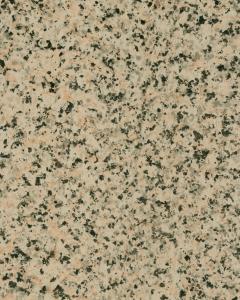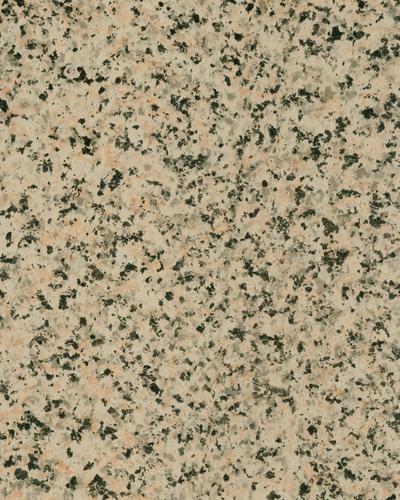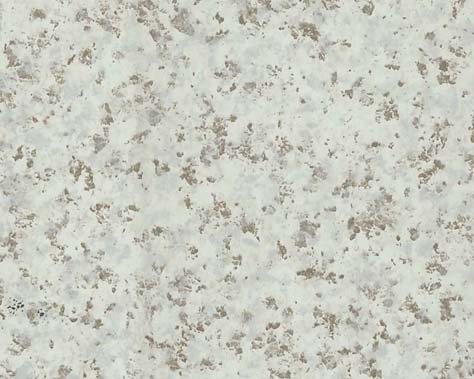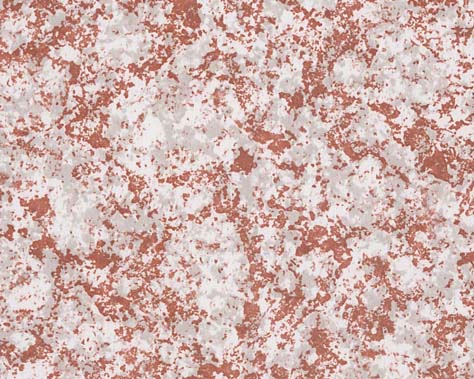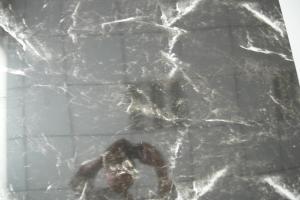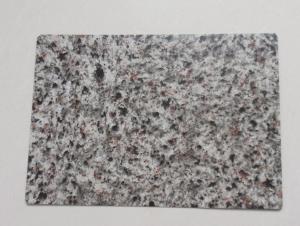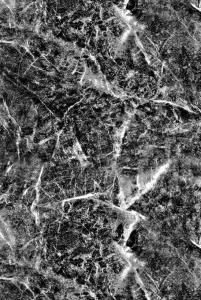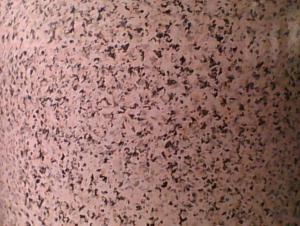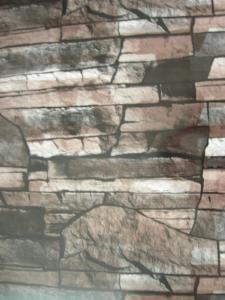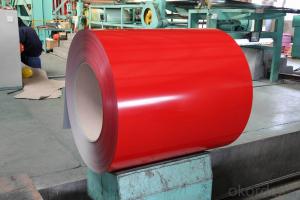Pre-painted Galvanized Steel Coil-JIS G 3312-stone pattern9
- Loading Port:
- Shanghai
- Payment Terms:
- TT OR LC
- Min Order Qty:
- -
- Supply Capability:
- 4000吨 m.t./month
OKorder Service Pledge
OKorder Financial Service
You Might Also Like
Pre-painted Galvanized Steel Coils/ PPGI/GI
I Specifications:
1.Thickness:0.16-2.0mm
2.Width:600-1500mm
3.Material: SGCC,SGCD,SECC,SECD,DX51D+Z
4.Zinc coating:40-275G/M2
5.Surface Structure: galvanized ,zero spangle, regular spangle or normal spangle
6.Surface treatment: chromated and oiled, chromated and non-oiled
7.Color:all RAL series
II Main characteristics :
1.strong corrosion resistance
2.surface quality
3.conducive to deep processing,such as the embossed PPGI,printed PPGI&punching PPGI
4.economy and practicality
III Applications:
Household Appliance:
1.Refrigerator shutter &side panels, Washer, Freezers, Air conditions,
2.Rice Cooker, Microwave Ovens, Water Heaters, Sterilization Cabinets, Range Hoods
3.Computer Panels , DVD/DVB panels, TV back panel etc.
Teaching Board: whiteboard, blackboard, green board(chalk board).
Indoor Decoration: Fireproof Door, kitchen cabinet, wall decoration.
Shipping Industries: Ship, Fecht, Marine.
Elevator/Medical Equipment/Rubbish Bin.
Thickness:0.17mm-0.8mm
Width:600mm-1250mm
Prepainted Galvanized Steel Coil
- Q: What are the different coil leveling methods used for steel coils?
- Steel coils can be leveled using various methods, each with its own advantages and limitations. Here are some commonly used methods: 1. Roller Leveling: Coils pass through rollers that apply pressure to flatten and level them. This method is effective in reducing coil crown or center buckle and eliminating coil memory. However, it may not be suitable for coils with severe shape defects or variations. 2. Stretch Leveling: Coils are stretched to remove shape defects. Gripper heads hold the edges of the coil while it is stretched. Stretch leveling is particularly effective in correcting crossbow and edge wave defects. However, it may cause elongation and yield loss in the material. 3. Temper Pass: Coils go through temper mill stands, where tension and compression forces are applied. Temper pass leveling improves flatness and removes coil memory. It is commonly used for thinner gauge steel coils but may not be suitable for thicker coils. 4. Corrective Leveling: This method is used for coils with severe shape defects. Skilled operators selectively remove material from specific areas of the coil to correct the shape. Corrective leveling effectively eliminates shape defects and improves flatness but requires significant labor. 5. Tension Leveling: Coils undergo tension forces while passing through pinch rolls. Tension leveling removes coil memory and improves flatness, especially for coils with edge wave defects. However, it may cause elongation and yield loss in the material. These are just a few of the coil leveling methods used for steel coils. The choice of method depends on specific requirements and desired flatness results. Considerations such as material thickness, shape defects, and production capacity are important in selecting the appropriate leveling method.
- Q: I heard on some shows that you can carbonise steel by heating it red hot then dropping it in black oil. i cant find this no where online, and the process for commercial carbon steel is totally different. can you really carbonise regular steel by heating it to red hot then dropping it in regular black oil. i saw it on mythbusters once. when the made carbon steel hammers to test if 2 hammers smashed together will shatter
- Carburized steel is not the same thing as carbon steel. All steel has carbon in it, but carbon steel is defined as Steel is considered to be carbon steel when no minimum content is specified or required for chromium, cobalt, molybdenum, nickel, niobium, titanium, tungsten, vanadium or zirconium, or any other element to be added to obtain a desired alloying effect; when the specified minimum for copper does not exceed 1.04 percent; or when the maximum content specified for any of the following elements does not exceed the percentages noted: manganese 1.65, silicon 0.60, copper 0.60. Carburizing is a surface treatment. Dropping hot steel in oil is oil quenching. It might get a little carbon in the surface, but oil quenching is mainly used as a slightly slower quenching process than water quenching, not for carburizing. Once it starts cooling down the carbon won't diffuse in. Quenching is used to change the hardness. The simplest way to carburize steel is to pack charcoal around it and heat it to 900 C or so. Industrial processes use a gas like carbon monoxide, but that's mostly just for easier process control.
- Q: Hello,is it possible to divide an alloy in its own elements? I am particularly interested in Stainless Steel, which is made of Nickel, Chrome and Iron. Do you have an idea of where can I find some more information (blogs, reviews, sites or books)?Thanks for your help
- All you have to do is heat the alloy. Since an alloy is a physical mixture heating will be able to separate the different elements according to their melting point. All elements have their own unique melting point.
- Q: How are steel coils used in the energy sector?
- Steel coils are used in the energy sector primarily for the construction of power plants and transmission infrastructure. They are used to manufacture various components, such as pipes, tanks, and structures, which are essential for the generation, distribution, and storage of energy.
- Q: I have heartgold and I don't have a steel type Pokemon to beat lapras. HELP
- I found electric pokemon more effective.. but try Steelix or Riachu
- Q: What are the different types of steel surface finishes for coils?
- There are several types of steel surface finishes for coils, including mill finish, galvanized finish, coated finish, and polished finish. Mill finish refers to the natural, untreated surface of the steel, which may have slight imperfections. Galvanized finish involves coating the steel with a layer of zinc to enhance corrosion resistance. Coated finishes can include various types of coatings such as paint, epoxy, or polymer to provide protection and aesthetic appeal. Lastly, a polished finish involves buffing or grinding the steel surface to create a smooth, reflective appearance.
- Q: How are steel coils inspected for straightness?
- To ensure compliance with quality standards, steel coils undergo a variety of methods to inspect their straightness. Among these, visual inspection is commonly employed, wherein trained inspectors meticulously examine the coil's edges, surface, and overall shape for any visible flaws or irregularities that might indicate a lack of straightness. An alternative approach involves measuring the coil's straightness using precise instruments. This entails taking measurements at different points along the coil's length and comparing them to specified tolerances. Accurate assessment of the deviation from the desired straightness is achieved using techniques like laser measurements or straightness gauges. Moreover, certain coils undergo non-destructive testing, such as magnetic particle inspection or ultrasonic testing, to uncover any internal defects or stresses that may impact their straightness. These tests are capable of identifying hidden flaws that visual inspection alone may fail to detect. Additionally, some manufacturers employ automated inspection systems that leverage advanced technologies like computer vision or artificial intelligence. These systems swiftly scan the coil's surface and analyze it for any deviations from straightness, generating precise measurements and ensuring consistent quality. In summary, the inspection of steel coils to verify their straightness involves a combination of visual inspection, precise measurements, non-destructive testing, and advanced technologies. These methods work together to identify any deviations from the specified straightness, ensuring that only coils meeting the required standards are utilized in various applications.
- Q: What are the different methods of edge trimming steel coils?
- There are several different methods used for edge trimming steel coils, depending on the specific requirements and preferences of the manufacturer. Some of the common methods include: 1. Slitting: This is a widely used method where the coil is passed through a set of rotating circular blades to cut the edges of the steel coil. Slitting allows for precise trimming of the edges and can be used for various thicknesses of steel coils. 2. Milling: In this method, the edges of the steel coil are trimmed using milling cutters, which remove the excess material to achieve the desired edge finish. Milling is often used for thicker steel coils or when a specific edge profile is required. 3. Shearing: Shearing involves the use of a sharp blade to cut through the steel coil along a straight line. This method is commonly used for thinner steel coils and provides a clean and straight edge. 4. Laser cutting: Laser technology is also employed for edge trimming steel coils. A focused laser beam is used to melt or vaporize the excess material, resulting in a precise and smooth edge. Laser cutting is often used for thinner gauges or when intricate shapes or patterns are required. 5. Water jet cutting: This method utilizes a high-pressure stream of water mixed with abrasive particles to trim the edges of the steel coil. Water jet cutting offers a versatile and precise cutting solution, especially for thicker steel coils and complex shapes. It is important for manufacturers to carefully evaluate their specific requirements, such as coil thickness, desired edge finish, speed, and cost, in order to select the most appropriate method of edge trimming for their steel coils.
- Q: I am trying to make a homemade fender eliminator for my motorcycle and the instructions from the site I found said to use 22 gage weld steel. I went to lowes and all they had was 26 gage sheet metal. What is the difference between the two? Is weld steel less flexible?
- 22 gauge steel is thicker than 26 gauge steel. They are saying weld steel but actually mean black steel(mild steel) not galvanized. You will be hard pressed to find 22 gauge black steel unless you go to a local sheet metal shop or go online to find it. The big box stores most likely will not carry 22 ga. black steel. Also not many sheet metal shops don't carry sheet metal that thin unless it is galvanized. Try searching online for 22 gauge mild steel, or black steel, or let your fingers do the walking and try a couple of local metal or welding shops.
- Q: Personally, I like Steel Cage matches to end in pinfalls. One of the biggest selling points of a Cage match is that it is to keep the competitors in and keep others out; essentially ensuring that it's a 1 on 1 match. As a result, I believe that pinfalls or submissions are important - but I know there's a lot of people that believe cage matches should only end in escape. What do you think??
- That exists.. Ts called hell in a cell. And normal cage matches are fine the way they are
Send your message to us
Pre-painted Galvanized Steel Coil-JIS G 3312-stone pattern9
- Loading Port:
- Shanghai
- Payment Terms:
- TT OR LC
- Min Order Qty:
- -
- Supply Capability:
- 4000吨 m.t./month
OKorder Service Pledge
OKorder Financial Service
Similar products
Hot products
Hot Searches
Related keywords
